On-page Keyword Optimization
The SEO Keyword Research Master Guide - Chapter 5
Optimizing keywords on the page
Last Updated: May 25, 2021
Now that we have a good list of keywords we want to rank for and build content around, we're going to make a small side trip to the world of on-page optimization.
We want to spend time on on-page SEO because good keywords are worth nothing if we don't smartly incorporate them into our on-page strategy. In fact, our keyword research informs and guides almost every aspect of our on-page SEO strategy.
Exactly how do we incorporate our keywords into our content (and HTML) in order to rank higher and make our visitors happy?
How keyword intent informs on-page SEO
Imagine we want to optimize for the following keyword phrase: "damaged furniture".
We sit down to start writing, but we soon realize we have no idea what people expect when they search for "damaged furniture". Do they:
- want pictures of damaged furniture?
- want to repair damaged furniture?
- want to shop for damaged furniture?
Fortunately, Google will tell us. All we need to do is simply look at the search engine results page (SERP).
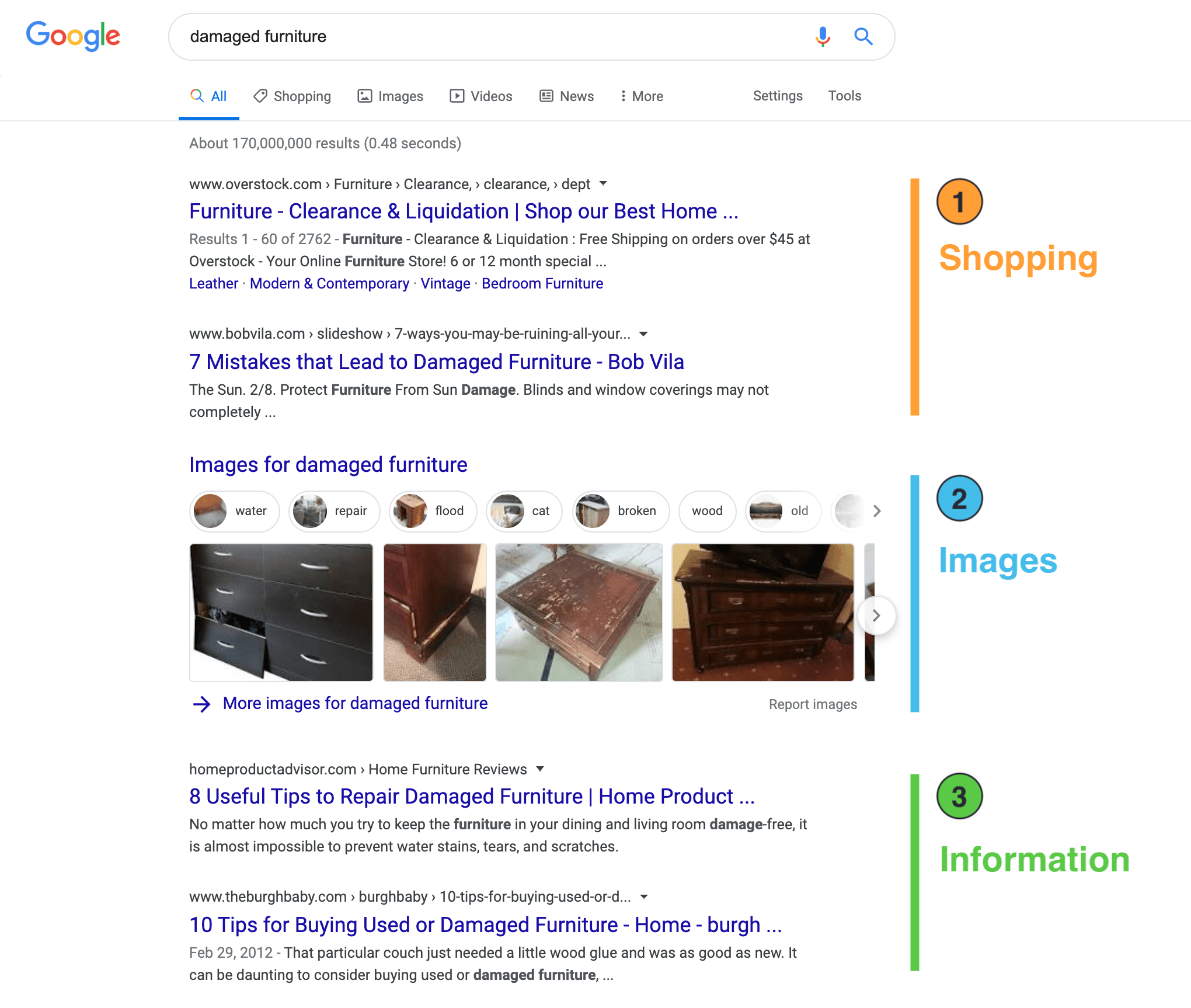
From the SERP, we can see a mix of user intent. That said, the first two ranking results are both about buying damaged furniture. This is a clear signal from Google that content about shopping for damaged furniture is what people are looking for.
If we want to rank highly for this keyword, we have a much better shot if we optimize for this specific intent.
Optimizing for damaged furniture images or general information pages may also work, but we shouldn't expect to rank in the top spots for that type of content for this particular query.
For another clue about intent, we can also look at Google's related searches. Here's what we find:
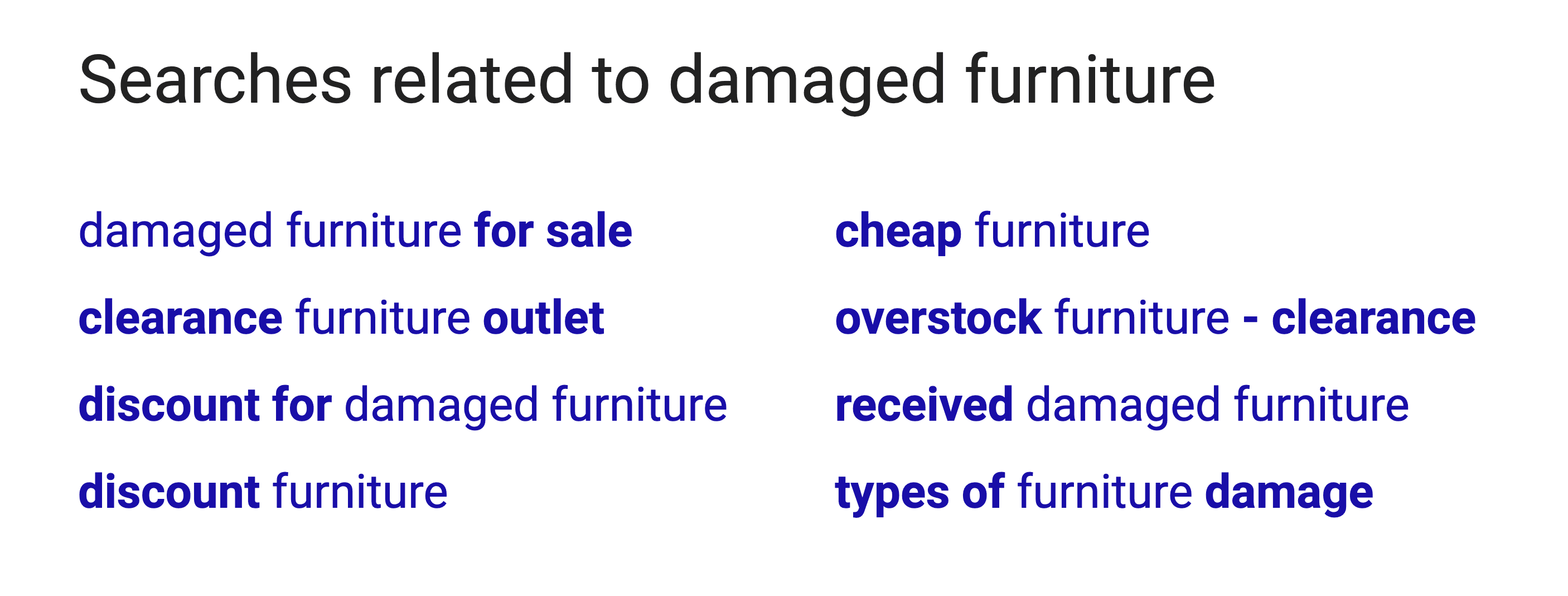
Again, all the related searches focus on shopping and buying furniture. If we want to rank for "damaged furniture", it would be a good idea to create content that satisfies this intent.
Using Google SERPs to determine keyword intent can not only tell the type of content we should create but also the format of the content.
Click to Tweet
Here's a SERP for the keyword phrase "northern lights". Notice the prominence of video and image results. Clearly, Google is showing us that videos and images are a good format for this query.
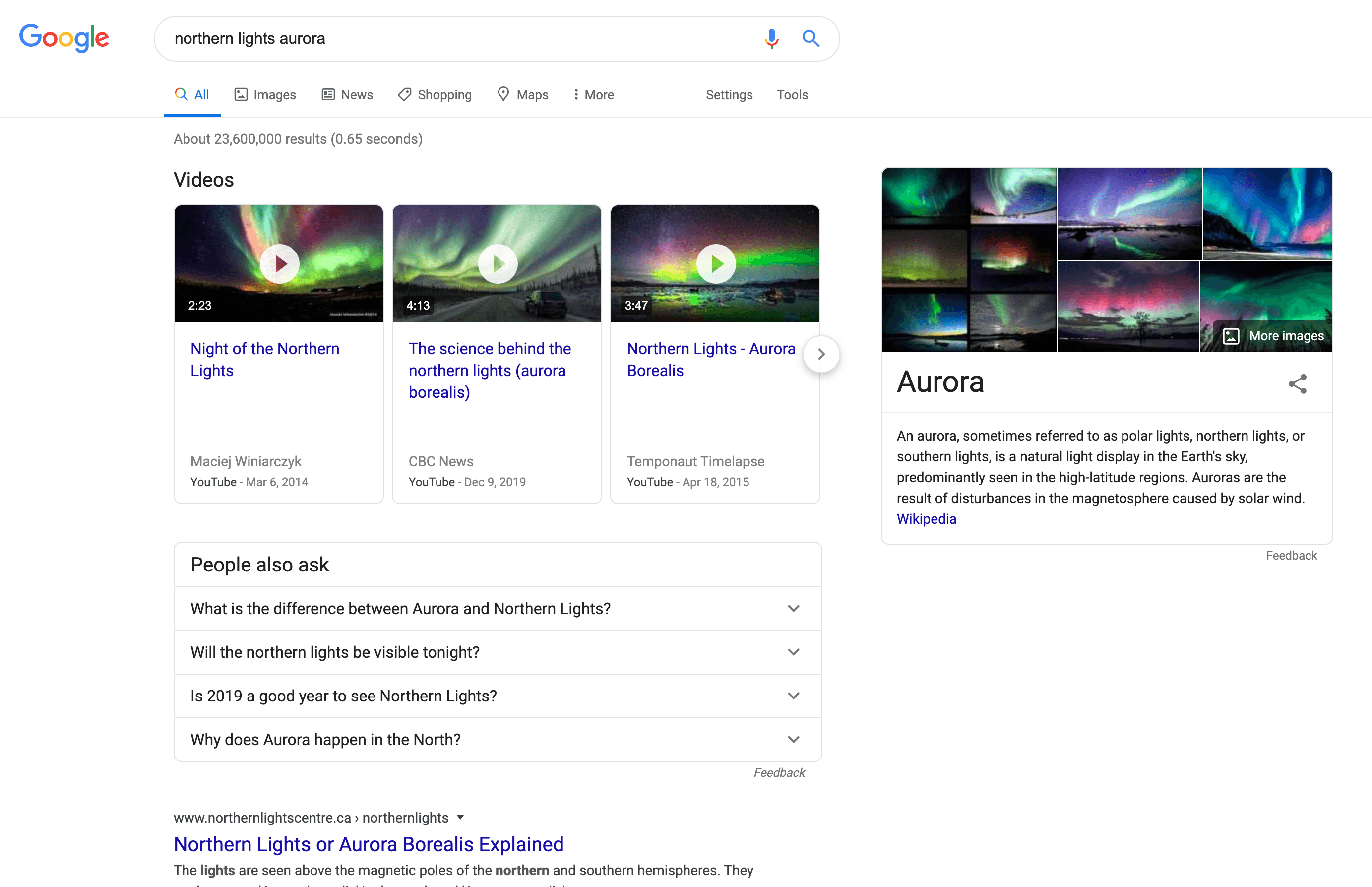
Clicking through to look at the ranking pages can also give us clues into the type of content Google expects will satisfy user intent.
For example, using our keyword phrase "motorcycle jacket with armor", we see that the top-ranking result (shopping intent) is an e-commerce page with a selection of jackets along with a shopping cart.
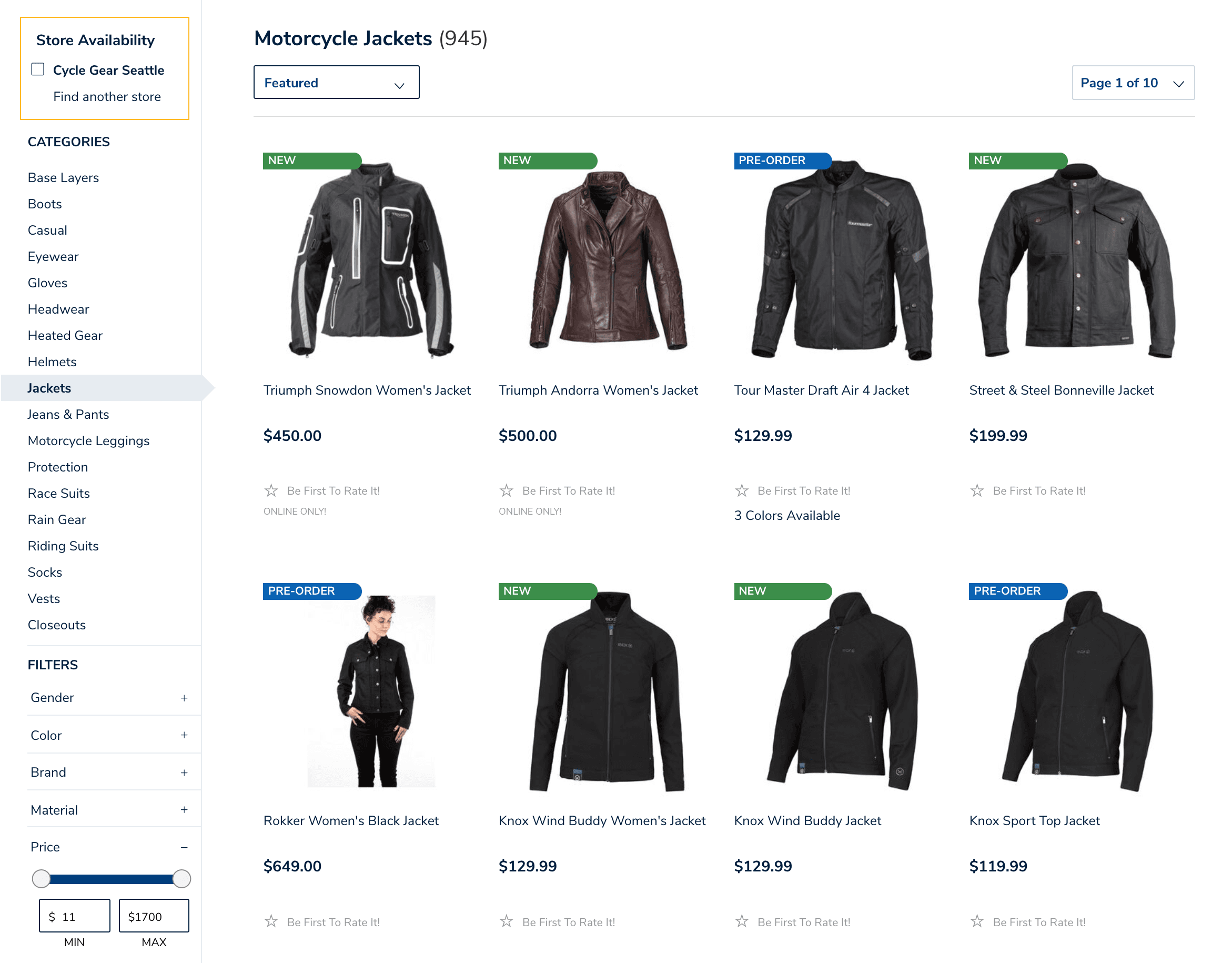
Obviously, people who use this keyword phrase are looking for:
- A selection of motorcycle jackets
- Pictures of each jacket
- An opportunity to buy
We could go on, but if we wanted to rank, we'd be wise to create content that was similarly able to satisfy this intent — hopefully with even better content!
Nick Eubanks: The Importance of Intent

"Seeing the massive shift over the past few years as Google continues to add more and more SERP interface patterns, stealing more and more clicks... it's become a critical part of the research process to understand exactly what the results look like.
Without this consideration... an SEO could spend hoards of time, energy, and dollars investing in ranking for terms that will not deliver traffic. Because of this, when evaluating terms for an SEO-focused campaign, I now pay more attention to estimated clicks and even the level of recursion for a phrase — i.e. how many times is the searcher is likely to modify their query based on the results displayed to narrow it down to where I can actually rank a page and earn a click."
Nick Eubanks — NickEubanks.com
Incorporating keywords on your page
Here's where all our hard work starts to pay off. We're going to use all the valuable keyword research we performed to create an optimized piece of content.
To do this, we're going to pull together everything we've learned. We'll need:
- A primary keyword
- Secondary keywords
- Related or supporting keywords
- Keyword questions
- Our user intent research
Our user intent research will inform the type of content we create, the solutions we offer to satisfy user intent, and perhaps even the layout of the page.
Regardless of the user intent, there are often specific ways to incorporate our keywords no matter the page layout.
Traditionally, basic ways to incorporate our keywords would include:
- URL: primary keywords
- Title tag: primary + secondary keywords
- Meta description: primary + secondary + related/supporting keywords
- Page title: primary + secondary keywords
- Subheadings: secondary + question keywords
- Body copy: primary + secondary + related/supporting keywords
- Image alt text: primary + secondary + related/supporting keywords
An example of these placements can be seen in the graphic below.
Note: This layout is an example only, and not meant to be a strict guideline. Your own layout and keyword usage will vary based on the particular user intent of your chosen keywords.
Pro tip: Keyword optimization using Moz Pro
If you have a Moz Pro account — including free trial — you can use the Page Optimization tool (located in Campaigns) to discover opportunities to optimize your keywords, as well as see related keyword and topic suggestions.
Simply navigate to the Page Optimization tab and enter the URL/keyword combo you want to rank for.
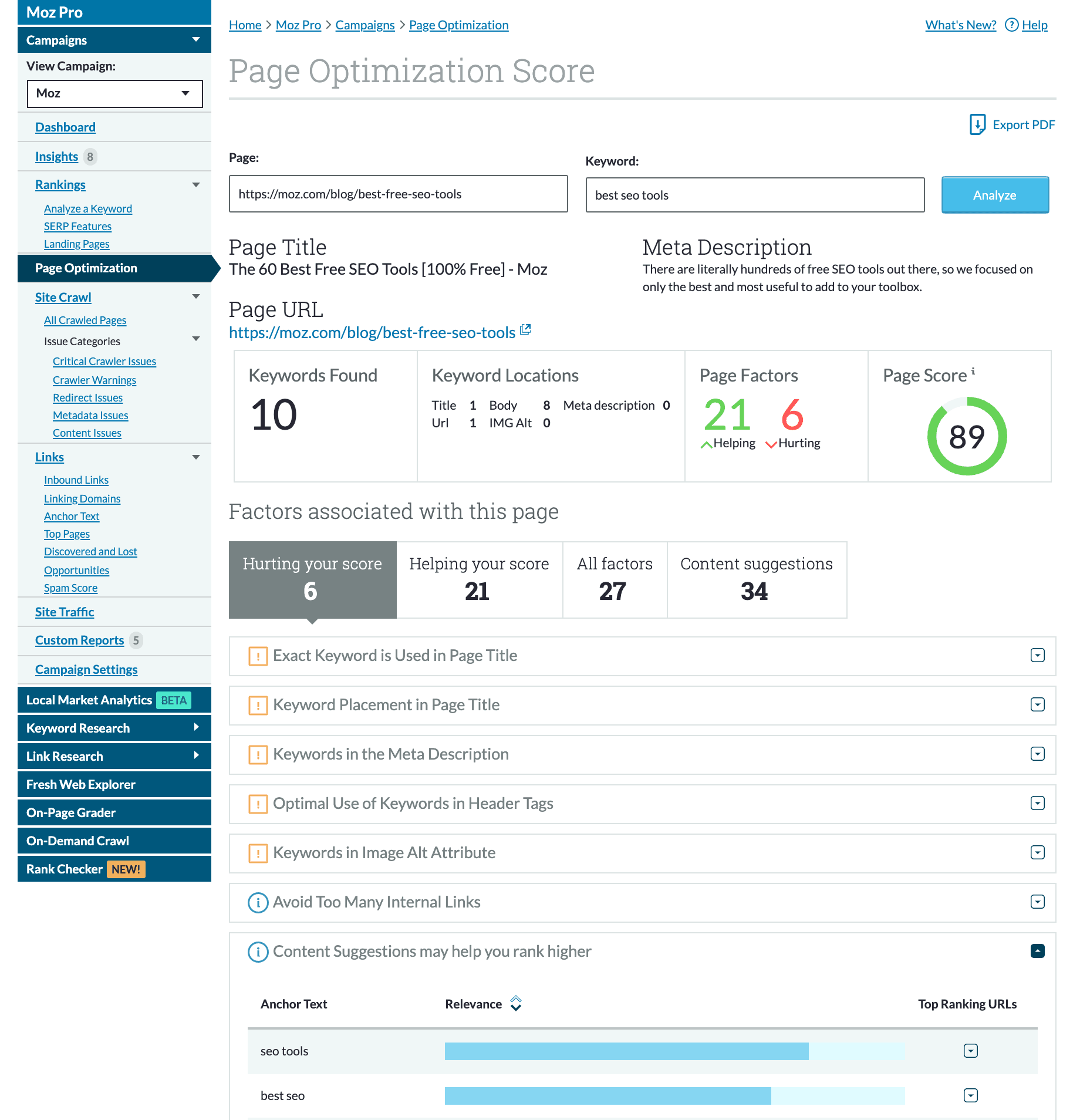
The score will change over time as you fix issues and incorporate suggestions.